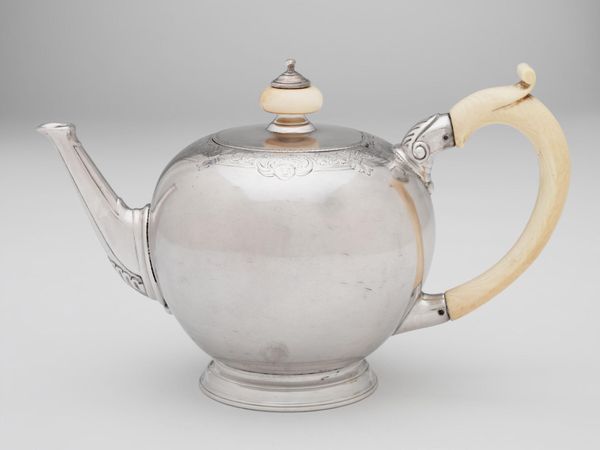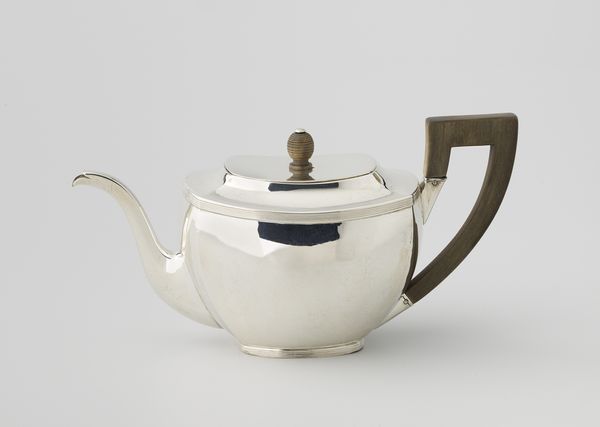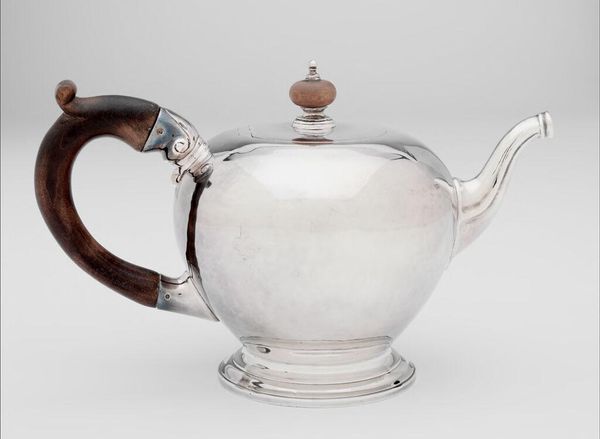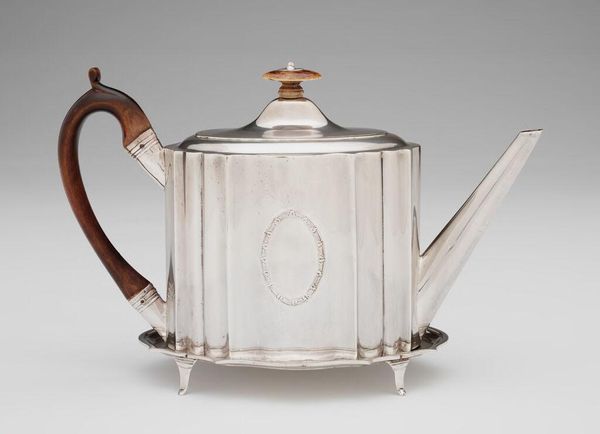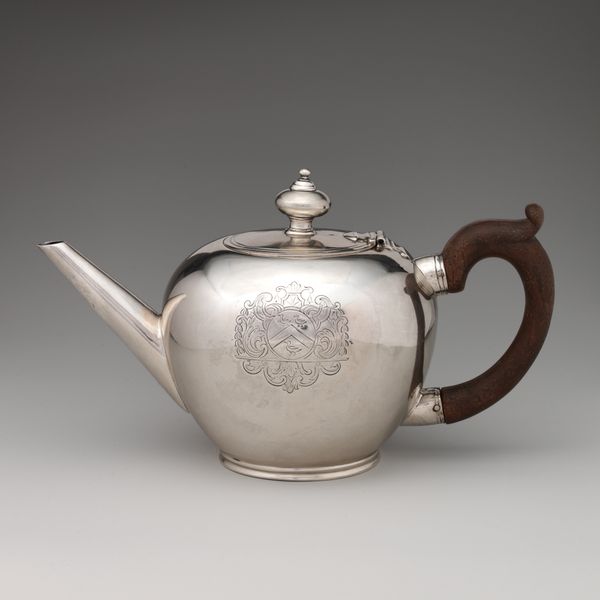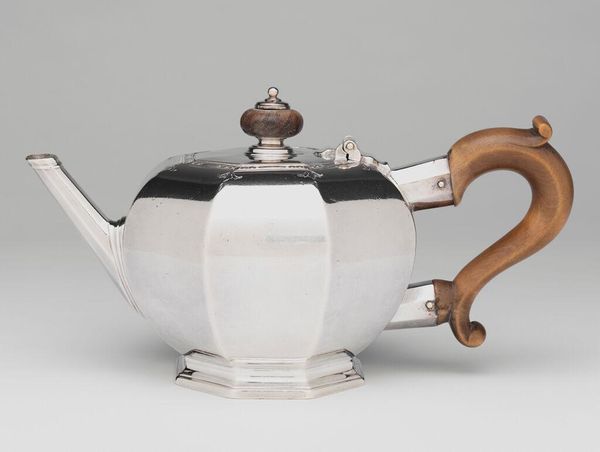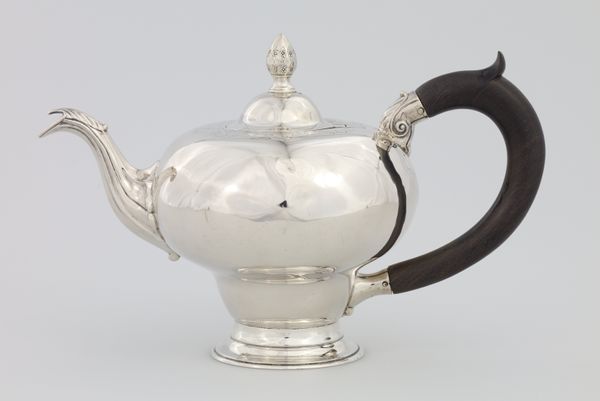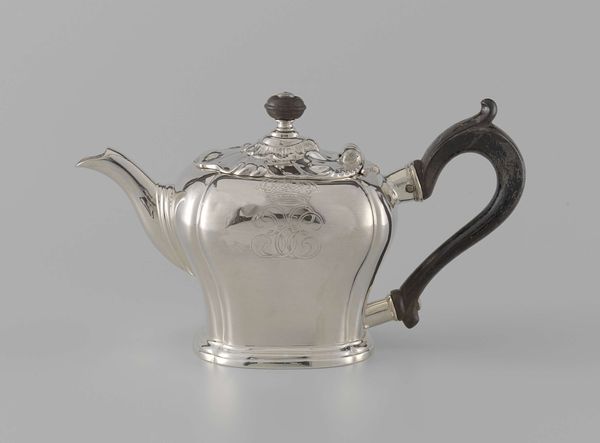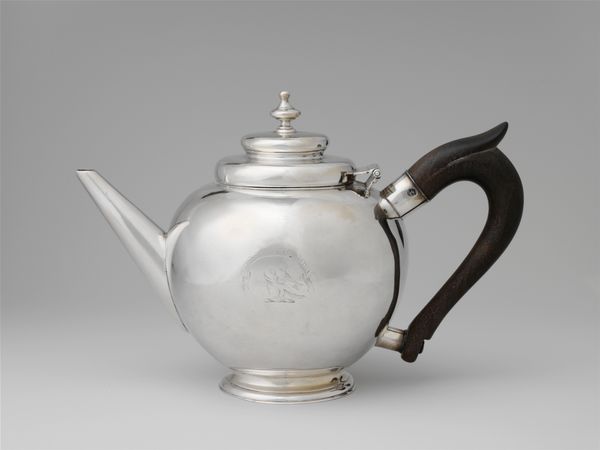
silver, wood
#
silver
#
baroque
#
ceramic
#
wood
#
decorative-art
Dimensions: 12.7 × 22.9 × 10.2 cm (5 5/8 × 9 3/4 × 4 3/4 in.); 547.5 g
Copyright: Public Domain
This teapot was crafted in Boston by Jacob Hurd, a leading silversmith of the American colonies during the first half of the 18th century. The teapot, made of silver and wood, speaks volumes about the colonial American society in which it was produced. It reflects both the material wealth and the social aspirations of the burgeoning merchant class. Tea drinking was an entrenched social ritual adopted from Britain, which quickly became associated with refinement and social standing, and consequently a symbol of colonial identity. However, this seemingly innocuous object also hints at underlying tensions. As Britain imposed taxes on tea and other goods, it became a focal point of resistance. Colonists started boycotting British tea, signaling a pivotal moment that would eventually fuel the American Revolution. Historians draw upon inventories, business records, and period documents to understand the intricate web of social, economic, and political factors that shaped the creation and reception of objects like this teapot. Only through this kind of research can we begin to understand the meaning of art as something deeply contingent on social and institutional contexts.
Comments
No comments
Be the first to comment and join the conversation on the ultimate creative platform.
